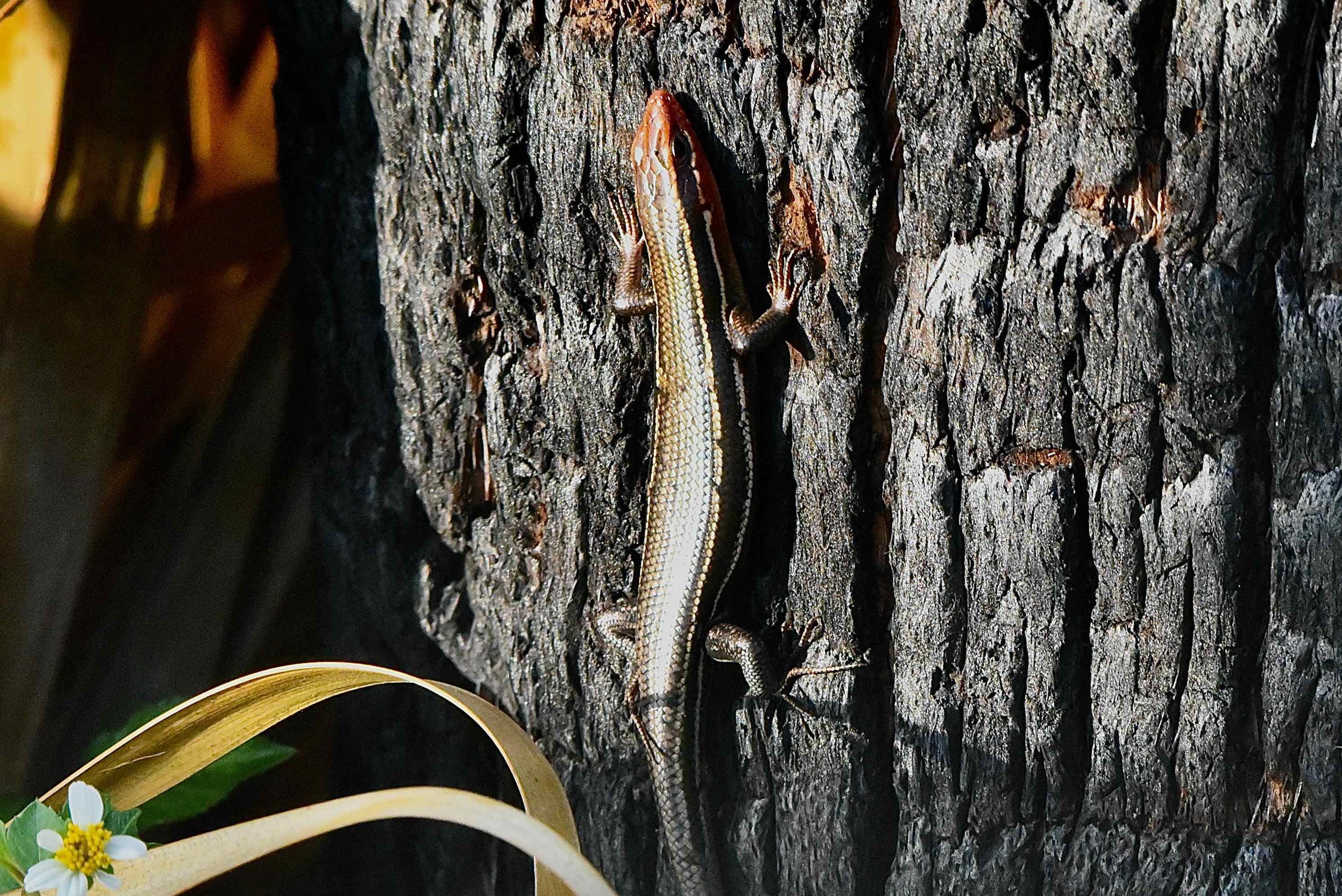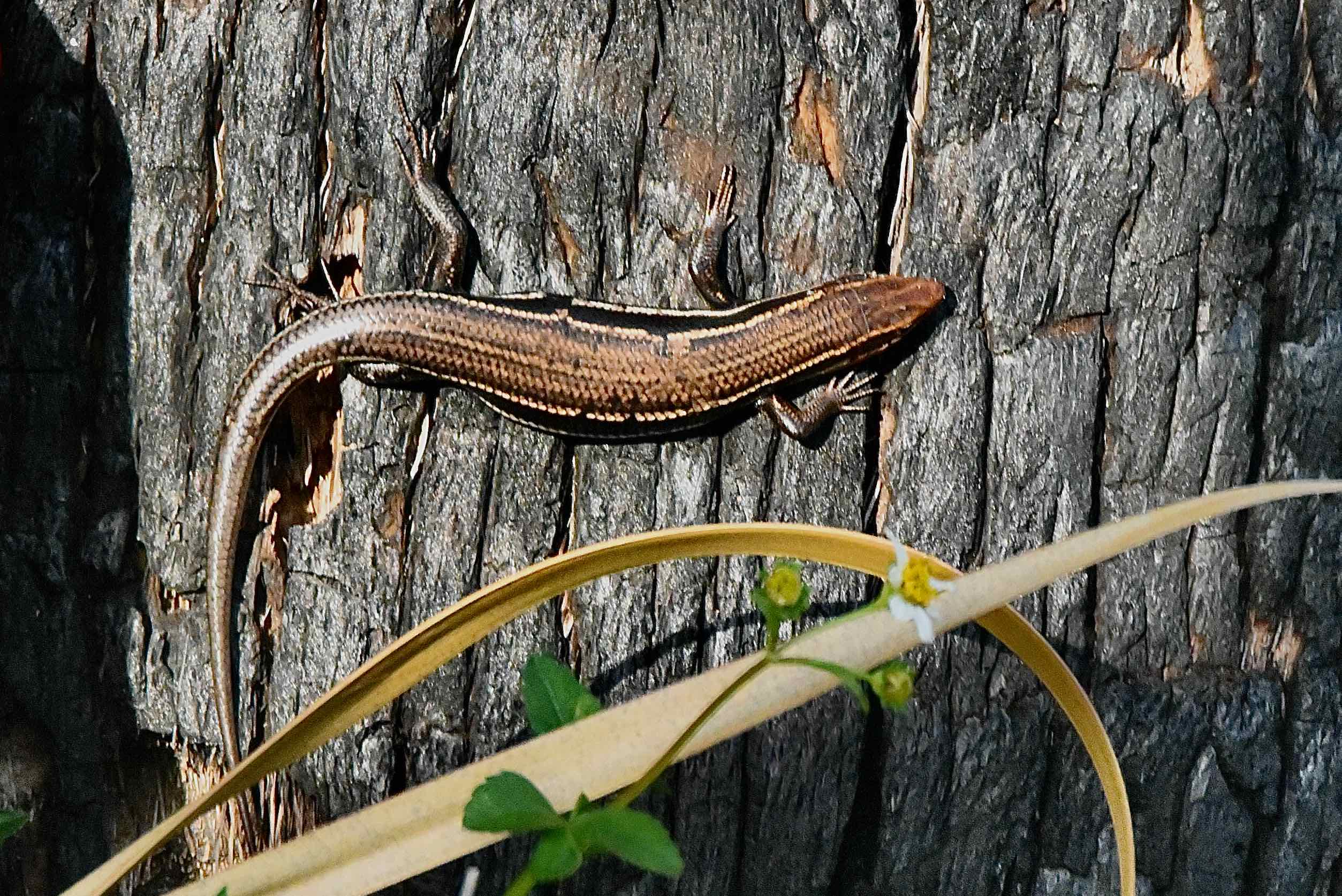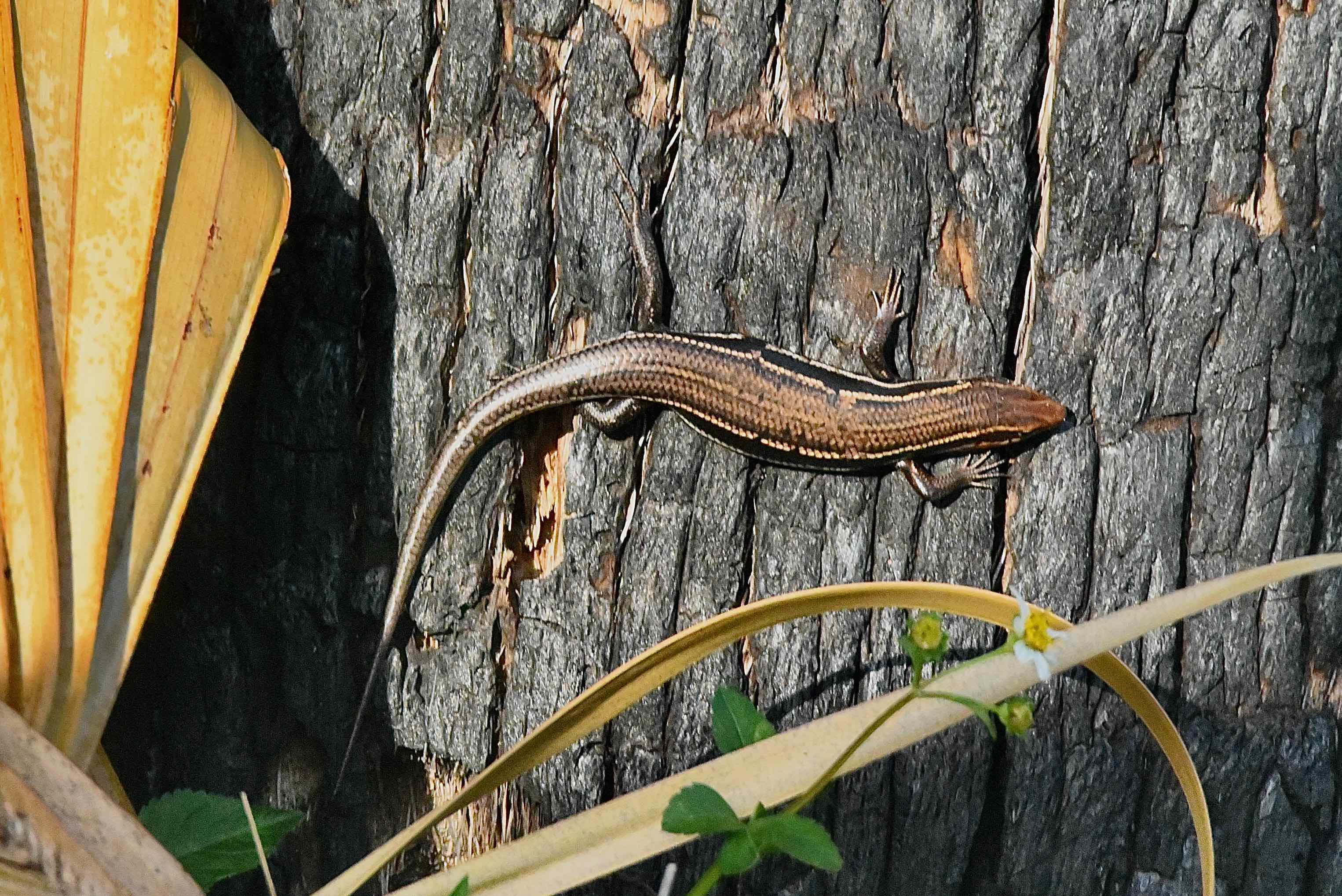
Southeastern five-lined skink, photographed at Jonathan Dickinson State Park, Hobe Sound, Martin County, in April 2019.
Southeastern five-lined skink, Plestiodon inexpectus. Easy to identify. Just count the stripes, right? Except there are the common five-lined skink, AKA P. fasciatus and the broadhead skink, AKA P. laticeps, both similar in looks and both share much of the same range as our guy.
The common notion is that you’ve got to look at certain scales on their bodies to tell the three apart. Some argue that that is a fallacy, that you almost need DNA testing to separate them.
So how confident are we that we’re looking at a Southeastern five-lined skink after writing the above? Not 100 percent, but still fairly certain thanks to one critical clue going for us: habitat.
Before we go on, let’s address the question, what exactly is a skink as opposed to any other run-of-the-mill lizard? Skinks generally have tubular-shaped bodies and shorter legs than most lizards.
The name doesn’t lie at least as to geography. The southeastern, is found throughout the southeastern United States as far north as Maryland and Kentucky, south to Florida and west to Texas. They eschew the Appalachians, preferring the lower altitudes of the coastal plains and river valleys.
As noted, the southeastern has five distinct lines, two white or yellow (cream) on each side and a black or brown stripe down the the back to the middle of the tail. The lines can become obscure on older males, but females retain them all their lifes. The body overall is brown.
The head of adult males turns bright red or orange during mating season. Tails on juveniles are blue. And yes, they do drop them (tail autotomy) if molested by a predator. And grow them back.
Southeastern five-lined skinks generally go between 5.5 inches and 8.5 inches from snout to the tip of the tail. Males generally are slightly larger than females.
Our guy, the southeastern, prefers drier habitats like scrubs, dry woods and coastal areas, where its two look-alike cousins tend to be found in more moist places, which is why we’re fairly confident in our identification of the guy on this page. We found him on the trunk of a palm at the foot of Hobe Mountain — scrubby habitat in Jonathan Dickinson State Park.
Southeastern five-lined skinks are carnivores, with grasshoppers, spiders, beetles and the like at the top of their menu.
One unusual characteristic of the southeastern: females provide a modicum of maternal care to their young. Females lay clutches of six to 12 eggs in moist soil or rotting wood. For most lizards, that’s it. Female five-lined skinks will guard her eggs from predators; once they hatch, though, that’s it. The eggs hatch in about a month.
Spring and early summer is the breeding season for the southeastern five-lined skink. They reach sexual maturity in just under two years.
We should note here that male southeastern five-linked skinks aren’t territorial, but can defend certain sites against intruding males or in some cases just become hostile toward other males. Apparently, the guys have difficulty distinguishing males of their own kind from the two look-alike species. But they have this one weird trick: they lick tongues. Each species apparently has its own chemical signature. Why is that important? Knowing that another male isn’t your species and thus not a competitor for a mate avoids unnecessary fights.
The scientific name, Plestiodon inexpectus, is a mashup of Greek and Latin. Plestiodon is Greek that translates to many teeth; inexpectus, Latin for exactly what you’d expect — unexpected — a reference to its unexpected discovery.
One Edward H. Taylor first described the southeastern in 1932 after spotting the skinks while working in Citrus County. He gave it the name Eumeces inexpectus, later changed to Plestiodon inexpectus, the currently accepted name.
Side note: Taylor was one of the most renown herpetologists of his time, identifying something like 150 reptile species during his career, mostly from the Philippines. Between 1929 and 1936 his particular thing was the genus Eumeces, which taxonomists have since sliced and diced into different genera. If you think of scientists as stuffy people, Taylor also served undercover with American intelligence after World War I, monitoring the Russian Revolution from Siberia, and with the Office of Strategic Services in Ceylon (now Sri Lanka) during World War II.
The southeastern five-lined skink is also called the blue-tailed skink, Taylor's scorpion lizard and Florida five-lined skink. It is a member of Scincidae, the family of “toothy” skinks.
Jonathan Dickinson State Park



